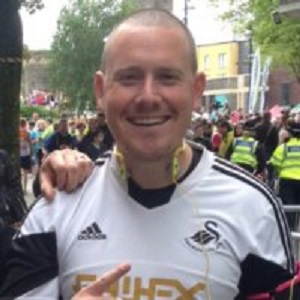 What is your current role?
What is your current role?
In my role as Plant Engineer, I manage anything from 10 to 100 craft depending on the plant requirements and maintenance required.
My key responsibilities are ensuring the reliability and improvement of three continuous casting machines with an annual production volume of four million tonnes. This includes all the associated process safety, budgetary and legislative requirements.
Outline your career so far. Have you worked on any unusual or high profile projects? ?
I started my career as an apprentice at Tata Steel, and then progressed through the organisation to my current role as Plant Engineer.
To date one of the most exciting projects I have worked on is the £185 million rebuild of the Port Talbot Blast Furnace Number 4, at the time it was one of the largest manufacturing projects in Europe.
You were registered as an EngTech (Engineering Technician) before becoming an IEng (Incorporated Engineer)? Describe your experience of becoming an EngTech
Throughout my career I have always retained a relationship with the Institution of Mechanical Engineers. When I was an apprentice I was an Affiliate Member, in my craftsman role I then progressed to Associate Membership.
My application for EngTech professional registration was a further stepping stone, it proved I had further developed my skills and knowledge and could demonstrate that I would apply my academic learning to practical engineering problems.
What encouraged your registration as an IEng?
It was part of a longer term career progression plan that I had in place. I used the UK-SPEC standards, alongside my company competency profiles to identify knowledge gaps and create opportunities for improvement and continuous development. Applying for registration as an IEng was a natural progression once I had progressed into a Manufacturing / Plant Engineer role.
My responsibilities were greater, the level of understanding was higher and again I was able to apply the academic knowledge from my BSc to supplement my practical experiences. There was also a sense of pride in progressing further as a professionally registered engineer.
Describe how you became an IEng.
Throughout my career and my relationship with the Institution I have been aware of the progression through the membership grades. I was already aware of the UK-SPEC standards when I decided to apply for IEng.
My employer supported me by sponsoring my application, I also had support from the Institution through their network of Business Development Managers (BDM). My local BDM Alan King, came to Tata Steel to promote the benefits of professional registration and gave us advice and support in making an application.
I believe that in engineering, the best approach is show you have sound academic and theoretical knowledge, which is supported by strong practical understanding and experience. This is how I approached my journey to professional registration, ensuring my practical understanding and experience evolved at the same rate as my academic knowledge.
Did anything surprise you about the experience?
For me, professional registration was not something to be rushed. I submitted my application when I was confident that I was competent in all the requirements of the UK-SPEC.
For me a controlled, disciplined approach to improving my experience and knowledge meant I was able to achieve IEng registration.
What advice would you give someone considering professional registration as an IEng?
It is great to be professionally registered to IEng status. It shows that I am able to adhere to engineering principles, standards and ethics at an Incorporated level.
How has becoming an IEng benefited your career?
I believe it has shown my dedicated to becoming a professional engineer and that I have a certain level of understanding of engineering principles and the drive to continuously improve.
What are your future career goals?
My future career goals are to continue my professional development both academically and practically. I intend to submit an application for Chartership this summer.
Find out more about becoming an Incorporated Engineer (IEng).